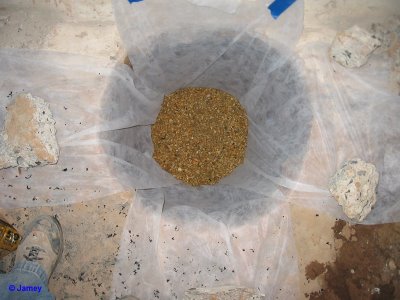Today: Carpet.
I have a cousin whose not-boyfriend is a carpet installer. The kid is pretty amazing...for her last apartment he sewed together a ton of remnants into a really cool runner carpet that snaked it's way through her whole apartment. He's a bright kid that went into the family business.
Last time I was out in California he said 2 things about carpet guys that have stuck with me and in all the years I've been doing home repair he's never once been proven wrong.
"Carpet is the EASIEST thing to do in home-improvement"
"Carpet guys are the dumbest ones in the home improvement business."
I won't go into how bad the carpet guys just screwed up at my friends house...ok, I will. They came out twice to measure her living room. They saw exactly what they were dealing with both times as far as the subfloor and the transition to the kitchen tile. Neither time did they mention a hint of any possible problems. Then they came out to put in the carpet. After they finished laying the carpet in the living room they said the subfloor and tile were too uneven for a transition strip and that they couldn't just do a clean edge because the tile guy (no, not me on that one) didn't leave them anything resembling a flat, straight edge to work with. They also showed up with a wooden transition strip but didn't install it saying, "We can't do a transition strip between carpet and tile." uh...ok...why did ya bring one with you then?
Why? Why did the guy who came out twice to measure then bring a transition strip he would later say he couldn't use where he brought it to go?
Why didn't he say something about the subfloor/tile/transition strip either of the 2 times he came out to measure the room?
Why wait until the carpet's down to say there's a problem with the subfloor?
Stupid stupid stupid!
I dunno the end result, or even if there is one yet...last time I was there he was calling and arguing with them. I didn't hear the response he got, but mostly he kept asking why they didn't tell them there'd be a problem when they could have easily fixed it, rather than waiting til the carpet was down.
And I don't know what the hell they were thinking with the strip of tackless that they put along the whole open side of the room (about 15 feet, where the transition strip to the tile shoulda gone)...but if you're barefoot you can feel the nails when you walk across it into the living room!!!
Is it just me? Or would common sense dictate using tacks in stead of tackless where people are going to be walking across it? You know...like most carpets are done at a doorway. Or they could have told them to put down a metal carpet tack edge before the tile went in so that dumbass would have had a straight line to work with and they would have solved all their problems before they were created.
In stead...they are now having the carpet pulled up so that the tile guy can come back to remove and replace all the tile along the edge of the room (removing and replacing individual tiles is WAY WAY harder than replacing a whole room and he's gotta do a load of 'em) and then they're going to re-lay the carpet. Last I heard was, the carpet place isn't charging them to come re-lay the carpet....so nice of them!
Ok...so the real reason I started writing about carpet was to talk about Stretching.
No, not the bendy over owie kind.
The kind that, if it's not done, voids the warranty on your carpet.
Apparently some new carpet doesn't need to be stretched, or so said the installer/salesman...BUT...
Before I ever installed my first carpet...I read the directions. For about a week I searched out everything I could find online, in stores and in the home repair books I have (and a few that friends have). I talked to a couple of installers. I watched at least a dozen carpet installation videos.
You know...I did my research.
Well...everything said you have to stretch a carpet when you put it in.
I've seen what happens when it's not done...those ripples (perverts!) and bulges that appear over time.
I've seen it time and time again.
And again.
At best I'd say carpet installers do the required stretching about 50% of the time (and that's being nice...I'm really thinking they don't do it 75-90% of the time)
I've never seen one do it in-person...and I've watched a lot of carpet go in. Even when I hired them here before i was a DIYer they didn't stretch anything and I've had to go back and re-cut carpets and put them in properly because they absolutely SUCKED!
So...What I'm saying here is....
If you have carpet put in you need to be there when it goes in.
And you need to make sure they stretch it.
Not talkin the knee-kicker here....s t r e t c h e r .
Make sure they walk in carrying one of these...

And that they are doing This:




















